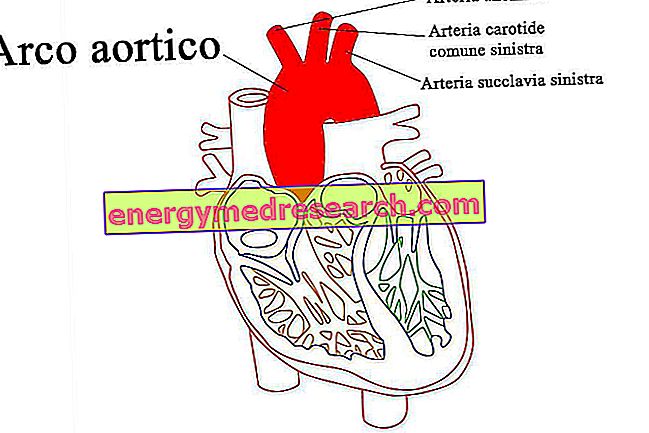Related articles: Toxoplasmosis
Definition
Toxoplasmosis is an infectious disease caused by Toxoplasma gondii. This protozoan is an obligate intracellular parasite, whose definitive host is the cat; however, it can also infect other mammals (intermediate hosts) and birds.
Toxoplasma invades the cytoplasm of cells and multiplies asexually within them, leading to the production of oocysts. Only in the intestinal tract of the cat, on the other hand, does a sexual reproduction occur: the oocysts produced are emitted with the feces and remain infectious in the ground for months.
The most frequent mode of infection is direct ingestion of the parasite with food or water contaminated with cat feces. However, contagion can also occur by eating raw or undercooked meat (lamb and pork; rarely, beef) or by bringing to the mouth the hands that have manipulated vegetables, soil or other infected materials.
Furthermore, toxoplasmosis can be transmitted transplacental (if the mother has been infected during pregnancy or if a previous infection is reactivated due to immunosuppression).
Finally, contagion can also occur through blood transfusion or organ transplantation.
Most common symptoms and signs *
- Miscarriage
- strangles
- Anemia
- Anorexia
- Asthenia
- Small child for gestational age
- Chills
- Cardiomegaly
- Coma
- Convulsions
- Seizures
- Dyspnoea
- Chest pain
- Spleen pain
- Ocular pain
- Muscle pains
- Vaginal hemorrhage in the early stages of pregnancy
- Hepatomegaly
- Erythema
- Pharyngitis
- Temperature
- phocomelia
- Fotofobia
- photopsias
- Hydrocephalus
- Hydrops Fetal
- Jaundice
- Lethargy
- Leukopenia
- lymphadenitis
- Swollen lymph nodes
- macrocephaly
- macules
- Sore throat
- Headache
- Mass or swelling in the neck
- Meningitis
- Microcephaly
- Microphthalmos
- Fetal death
- oligohydramnios
- papules
- Loss of coordination of movements
- Reduced vision
- Mental delay
- Nephritic syndrome
- splenomegaly
- Confusional state
- Pericardial effusion
- Blurred vision
Further indications
In Toxoplasma gondii infection it is possible to distinguish two successive phases.
In acute infection, the parasite can be found in the blood and in the lymph nodes in directly infecting form; this first phase is often symptomatic.
When the protective immune response develops in the host to Toxoplasma gondii, the multiplication of the parasite ceases, but tissue cysts are formed which persist in the body in an inactive state for years (especially in the brain and muscles). If the immune defenses fail, the microorganism can reactivate, reproduce again and induce toxoplasmosis again. Concluding, therefore, the possibility of developing the disease is very low for immunocompetent people; the risk, however, is high for the fetus and for subjects who are or become immunosuppressed due to illness or medical treatment.
Toxoplasmosis can present itself in different ways, from an asymptomatic infection to involvement of the potentially lethal CNS. Sometimes, the symptoms of acute toxoplasmosis can simulate those of a mild flu-like syndrome or of an infectious mononucleosis with cervical or axillary lymphadenopathy, fever, hepatosplenomegaly, pharyngitis, myalgia and malaise. This mild form can persist for weeks, but is almost always self-limiting.
Toxoplasmosis of the central nervous system mainly affects AIDS patients or immunosuppressed subjects. It typically occurs with headache, fever, altered mental status, convulsions and coma; sometimes, focal neurological deficits occur, such as loss of motor capacity or sensitivity.
In severely immunocompromised patients, alternatively, a disseminated infection may occur without CNS involvement . This is manifested by pneumonia, myocarditis, diffuse macular-papular rash, meningitis and encephalitis. Untreated disseminated toxoplasmosis is potentially fatal.
In congenital toxoplasmosis the clinical manifestations are various. In the newborn, the disease can be very serious; symptoms include jaundice, bilateral chorioretinitis, hydrocephalus (or microcephaly) and mental retardation. Furthermore, miscarriage and preterm labor can occur.
Ocular toxoplasmosis often results from a reactivated congenital infection. It manifests as a chorioretinitis that can cause eye pain, blurred vision and sometimes blindness.
Diagnosis is based on serological tests (IgM and IgG dosage), histology or PCR for the DNA of the parasite in the blood, in the cerebrospinal fluid or in the amniotic fluid.
Most immunocompetent patients do not need specific therapy unless serious symptoms persist. Treatment is indicated in cases of acute toxoplasmosis of the newborn, the pregnant woman and the immunocompromised patient; more often than not, pyrimethamine associated with sulfadiazine or clindamycin is expected. Furthermore, corticosteroids should be given to patients with ocular toxoplasmosis.
Prevention takes place by washing your hands after handling raw meat, earth or cat litter.
As soon as a woman finds out about waiting for a baby or when she has decided to become pregnant, she can undergo a toxo test. This test is performed with a blood test in order to search for anti-toxoplasma antibodies (IgM and IgG) and check whether the future pregnant woman is immune or not to infection.



